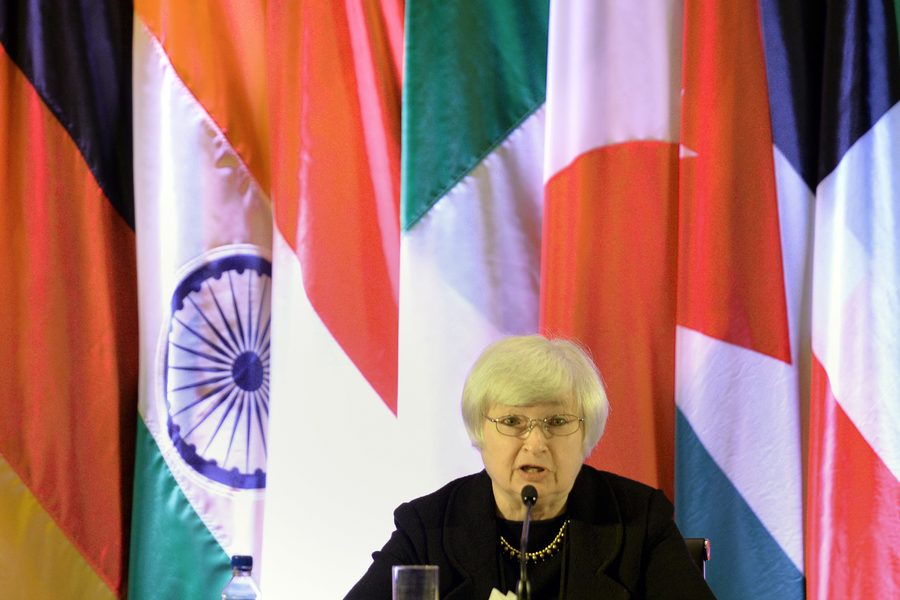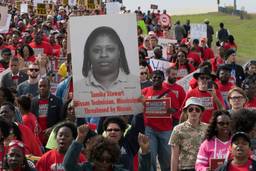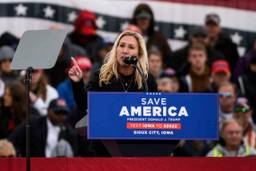A New Direction For the Fed?
Yellen may be better than Larry Summers, but she’s not the reformer the Fed needs.
David Moberg

With Larry Summers’ withdrawal from consideration as chair of the Federal Reserve Board, the odds jump dramatically for the nomination of Janet Yellen, the current Fed vice-chair, for the head of the institution that, according to journalist William Greider, “runs the country.”
Even before Summers’ withdrawal, many progressives had chosen to back Yellen to step in when current chair Ben Bernanke’s term ends in January. Summers, a well-connected, star-quality economist, is close to the Wall Street Democrats who have dominated the party’s economic policy since the Clinton administration. As Treasury Secretary, he arguably served big finance more than the public by pushing for national and global financial deregulation — which, in turn, led to the 2008 financial crisis and Great Recession. He has also enriched his own personal capital by working for several Wall Street financial institutions, including Citigroup.
Yellen, by contrast, is a respected academic economist who has held various positions in the Federal Reserve system for 13 years but has never worked for financial businesses. She is identified with the Fed faction most committed to reducing unemployment and to tightening regulations of the financial sector. If picked, she would be the first woman chair.
It’s not suprising that, given the choice of those two candidates, many progressives had jumped on the bandwagon for Yellen. When it appeared Obama would nominate Summers, some members of the Senate Banking Committee — Sen. Sherrod Brown (D-Ohio), Jeff Merkley (D-Ore.), and John Tester (D-Mont.) — announced they would vote against him, and Sen. Elizabeth Warren (D-Mass.) was expected to oppose him. The second-highest ranking Republican in the Senate, John Cornyn (R-Texas), also announced he would not back him for the position. Summers said he withdrew to avoid a big fight.
But beyond the personalities in any contest for office, progressives need to take this opportunity to begin a larger debate about how the Fed has failed to do its job under Bernanke, and how it must transform both itself and the financial sector to avoid continuing the bubble and bust instability of the economy in recent decades. And if one takes a more in-depth look at Fed policies, Yellen seems at best a cautious reformer, and her record as Fed vice-chair suggests that she is not as likely to rein in the speculation of big, interconnected banks or to use the Fed to aggressively promote jobs as some equally qualified economists whom Obama is unlikely to consider, such as Nobel laureates Joseph Stiglitz and Paul Krugman.
Fellow economists and some progressives praise Yellen for her relatively prescient forecasts and recognition of the housing bubble, and she has generally supported other Fed governors who take seriously their responsibility to maintain high employment as well as low inflation (although she has not always taken that position; in the late ‘90s, Center for Economic and Policy Research co-director Dean Baker says, Yellen urged the Fed to raise interest rates as unemployment dropped, while chair Alan Greenspan bucked such conventional wisdom, ultimately demonstrating that low unemployment need not trigger problematic inflation). But while Yellen, as Fed vice-chair, has supported an innovative variety of Fed actions since the start of the financial crisis, many progressives see those policies as having tilted towards saving bankers rather than reviving the economy.
As Fed vice-chair, Yellen generally sided with Bernanke on the bailout of the banks, which Bloomberg News reported in 2011 as having involved $7.7 trillion in largely secret loans, and the Fed subsidies to the big banks of about $83 billion a year. She also supported many aspects of the bailout that favored banks without giving the public adequate control or payback in the form of job creation. For example, in the crisis leading to the Great Recession, the Bernanke-headed Federal Reserve did not act like a “lender of last resort,” as classic economic theory would dictate. According to an April 2013 Levy Institute report written by University of Missouri-Kansas City economist L. Randall Wray, the Fed didn’t limit itself to providing banks that met tough standards the needed cash to get through the crisis. Rather, it made what Wray estimates as $29 trillion available to a range of financial institutions, many of them essentially insolvent (or bankrupt). It went beyond providing banks liquidity and saved failing — even fraudulent — firms instead of seizing and reconstituting them. The Fed’s more recent policy of “quantitative easing,” or buying Treasury notes and mortgage-backed securities, continued the big-bank bailout, which helped the banks grow both in size (despite commitments to avoid more “too big to fail” crises) and profits. These initiatives provided little stimulus to the broader economy. Rather, the Fed provided nearly free money to big banks that resumed speculation in derivatives and made predatory loans to financially troubled municipalities (like Detroit).
While the Fed mistakenly saw enabling banks to make loans as its main objective, Wray and other progressives say that the real problems for the economy during the crisis included unemployment, lack of wage growth, income inequality, a collapsed housing market, state and local budget crises, and lack of investment in productive assets like infrastructure and research. The banks did virtually nothing with their public bailout and subsidies to address any of these problems, except to block useful actions (say, on housing) or make matters worse (public debt). Yellen was an integral part of Bernanke’s team, and would likely continue policies in a similar vein, even if she tended slightly toward more stimulus or regulation. It is unclear whether she would act to stop the bubbles, like the one in the housing market that triggered this latest recession, which have so plagued the U.S. economy for the past several decades.
Progressives want a Fed that focuses on the Main Street economy and rigorously regulates the predators of Wall Street, not one that bails big banks out when they fail and defraud. Its critics, led in the Senate by Bernard Sanders (I-Vt.) and Elizabeth Warren, want the Fed above all to aid in job creation. They ask: Why can’t the Fed loan directly at the low rates they offer the banks for infrastructure improvements or other public, job-creating purposes, rather than give the money to banks that are likely either to charge extortionate rates or speculate? (The Fed could, of course, but that would upset bankers and conservatives.) Progressives also want tougher regulation — including a return to the separation of investment and commercial banking enacted during the New Deal, and in most cases, a breakup of the biggest banks.
There is, however, an alternative to breakups: The largest banks could be subject to increasingly strict controls or, if they fail or pose a systemic risk, they could be effectively nationalized.
There is a historical basis for the Fed, together with Congress, taking this step towards nationalization or socialization. James Livingston, a historian of the Fed at Rutgers University, writes in an unpublished manuscript that Congress created the Fed a century ago to “socialize” an anarchic and self-destructive private market, “to make it the economic means to the social ends we, the people, have defined.” After the bank failures of the 1930s, the Fed socialized the risk of people’s savings in regulated banks with deposit insurance. During the Great Depression, Keynes also argued that capitalism needed the government to allocate capital in part because it had the long-term perspective and resources to overcome an economic collapse. In this system, banks, especially big ones, would be public agencies that would follow sound policies aimed at “Main Street” growth and jobs, not speculative enrichment of the financial sector at the expense of the rest of the economy. Now, even more, as Livingston writes, we need to socialize “the allocation of these immense resources” to serve the Constitutional goal of providing for the general welfare.
The choice of a new Fed chair takes on additional importance with Republicans blocking even modest proposals to stimulate the economy, and the big banks and their allies delaying implementation of the 2010 Dodd-Frank financial reforms. Federal Reserve policy will deeply influence the strength of the recovery and prospects for both jobs and higher incomes across the workforce. Yellen may be better than Summers, but she is unlikely to try to lead the Fed in the bold new direction the country needs. To this end, Obama would do better to nominate someone else — like Stiglitz or Krugman.

I hope you found this article important. Before you leave, I want to ask you to consider supporting our work with a donation. In These Times needs readers like you to help sustain our mission. We don’t depend on—or want—corporate advertising or deep-pocketed billionaires to fund our journalism. We’re supported by you, the reader, so we can focus on covering the issues that matter most to the progressive movement without fear or compromise.
Our work isn’t hidden behind a paywall because of people like you who support our journalism. We want to keep it that way. If you value the work we do and the movements we cover, please consider donating to In These Times.
David Moberg, a former senior editor of In These Times, was on staff with the magazine from when it began publishing in 1976 until his passing in July 2022. Before joining In These Times, he completed his work for a Ph.D. in anthropology at the University of Chicago and worked for Newsweek. He received fellowships from the John D. and Catherine T. MacArthur Foundation and the Nation Institute for research on the new global economy.







